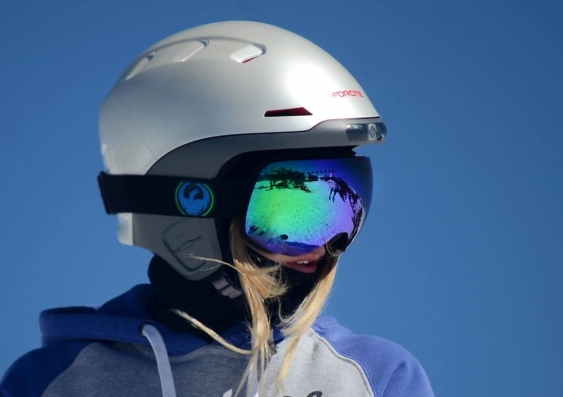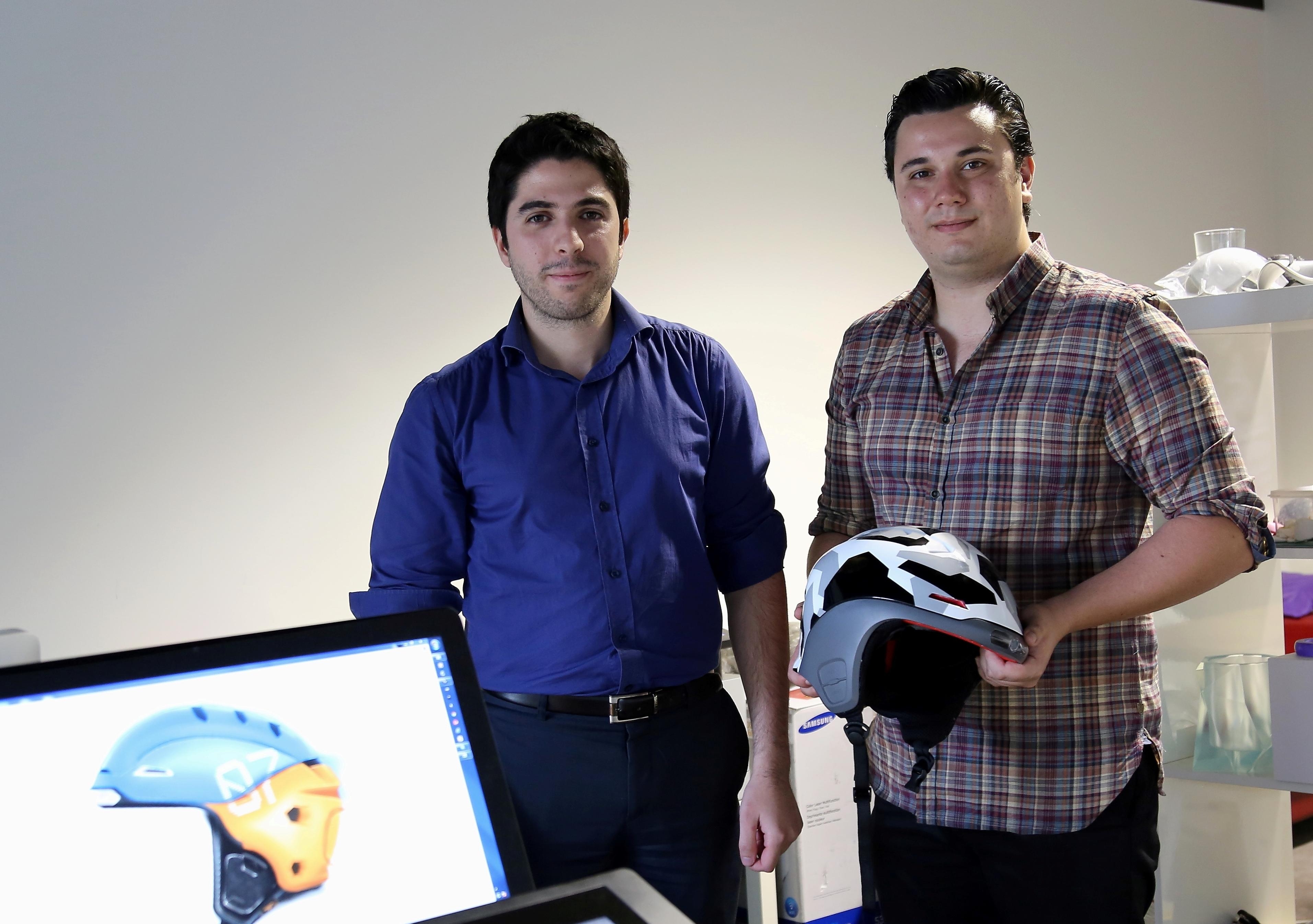Hot headgear to hit the slopes
Tech-loving snowboarders and skiers will get a head start with the world’s first intelligent snow sports helmet, created by three UNSW graduates.
Tech-loving snowboarders and skiers will get a head start with the world’s first intelligent snow sports helmet, created by three UNSW graduates.

Leilah Schubert
UNSW Media
02 9385 8107
l.schubert@unsw.edu.au
Tech-loving snowboarders and skiers will get a head start with the world’s first intelligent snow sports helmet, created by three UNSW graduates.
Packed into the high performance headgear is every tech device you can imagine, including a full HD camera, GPS, stereo speakers, a noise-cancelling microphone to communicate with friends via Wi-Fi and Bluetooth, impact sensors, a microcomputer and an emergency beacon.
UNSW Industrial Design graduates Alfred Boyadgis and Julian Chow and Engineering graduate George Constantinos came up with the idea after a trip to the snow left them fumbling with frozen hands to operate their phones and cameras.
“The head is where everything happens and a helmet is a great platform to fit all these electronics to provide extra information such as your speed or where your friends are,” Boyadgis says.
The Alpine Helmet follows on from Boyadgis’ very successful final-year Industrial Design project, a 'RoboCop'-style police motorcycle helmet that won international design awards including a Silver medal in the James Dyson Award and the Red Dot International Design Award.
After graduation the trio initially headed down the traditional employment path, but with a bit of encouragement from UNSW Innovations, the University’s commercialisation company, they were able to take the leap to create their own company, Forcite Helmet Systems.
Student Entrepreneur Development Manager Josh Flannery says UNSW Innovations was able to provide valuable start-up assistance including facilities, R&D support, and legal and intellectual property advice.
“We were also able to introduce the Forcite team to NSW Trade & Investment where, based on our recommendation, a grant was provided for the early development phase,” Flannery says.
Boyadgis and Chow also entered the UNSW Startup Games, an entrepreneurship competition designed to provide insights into how they might further develop their ideas and their company.
“We learnt how to pitch and develop a business plan and discover what investors think. It opened our eyes to the world because we didn’t really know much about the key players in the industry, the people in Silicon Valley who could help us,” Boyadgis says.
Boyadgis also credits Andrew Fowkes from the UNSW Design Lab for challenging the team to consider what happens when someone crashes and the helmet is broken.
“A helmet is meant to protect you, it’s meant to be replaced, and that’s something we had to factor into the design," Boyadgis says.
“The top shell, the phone, the speakers, the camera, the computer, the battery – are all elements that you can pull apart, and put back together again for a reasonably affordable price."
The Forcite team hopes to have the Alpine Helmet available in time for the northern hemisphere ski season and to expand into helmets for motorbikes, bikes and the emergency services and mining sectors.
“We have had more than 2500 registers of interest in the Alpine Helmet and we’re currently looking for further investment opportunities,” says Boyadgis.
As for the more distant future, the Forcite team sees technology moving into a whole range of networked wearable items and, with bionic eyes and mechatronic limbs on the horizon, perhaps even incorporated into the body.
For more information or to register your interest visit Forcite.com.au.
